Research Article Open Access
Biodegradation of Polychlorinated Biphenyls (PCBs), Aroclor 1260, in Wastewater by Isolate MD2 (Pseudomonas aeruginosa) from Wastewater from Notwane Sewage Treatment Plant in Gaborone, Botswana
| Spar Mathews* | |
| Department of Biological Sciences, North West University-Mafikeng Campus, South Africa | |
| Corresponding Author : | Spar Mathews Department of Biological Sciences North West University-Mafikeng Campus, South Africa Tel: +27 73 499 1326 Fax: +27 18 389 2052 E-mail: sparmat@gmail.com |
| Received November 06, 2014; Accepted November 25, 2014; Published November 28, 2014 | |
| Citation: Mathews S (2014) Biodegradation of Polychlorinated Biphenyls (PCBs),Aroclor 1260, in Wastewater by Isolate MD2 (Pseudomonas aeruginosa) from Wastewater from Notwane Sewage Treatment Plant in Gaborone, Botswana. J Bioremed Biodeg 5:266. doi:10.4172/2155-6199.1000266 | |
| Copyright: © 2014 Mathews S. This is an open-a ccess article distributed under the terms of the Creative Commons Attribution License, which permits unrestricted use, distribution, and reproduction in any medium, provided the original author and source are credited. | |
Related article at Pubmed Pubmed  Scholar Google Scholar Google |
|
Visit for more related articles at Journal of Bioremediation & Biodegradation
Abstract
Notwane Sewage Treatment Plant is situated on the eastern part of Gaborone emptying its effluent into Notwane River which flows along the periphery of Gaborone. The wastewater treatment plant receives wastewater from most major industries, and most of the residential waste water for the city of Gaborone. The wastewater is not recycled despite the great shortage of water in Gaborone and surrounding villages and the drying up of Gaborone dam. Wastewater samples from the treatment plant was collected and taken to Department of Biological Sciences in Mafikeng for analysis of PCB (Aroclor 1260) degradation by bacteria. Biodegradation of polychlorinated biphenyls using MD2 was conducted using Aroclor 1260 added to wastewater obtained from Notwane Sewage Treatment Plant by measuring shift in the wavemax (λmax) nm using Cary 300 UV-visible spectrophotometer, for a period of 96 hours. The presence/absence of the compounds was checked using High Performance Liquid Chromatography (HPLC) UFLC Shimadzu using florescence detector pump RF-20A and system gold column C18 (CTO-20A) after 96 hours. The bacterial strain MD2 was found to have completely degraded the Aroclor1260 in wastewater after 96 hours. A shift in maximum wavelength was observed to be from 224 nm to 270 nm, an indication that Aroclor 1260 was degraded forming a chlorobenzoate derivative. This renders the wastewater free from polychlorinated biphenyls thus can be safely recycled.
| Keywords |
| Aroclor 1260; Biodegradation; Polychlorinated biphenyls; Recycle; Wastewater |
| Introduction |
| Water scarcity has been reported to be increasing in Africa in general and the problem is worsened by the rapidly growing population in the region [1]. Wastewater treatment is also very essential as it does not only address the global problem of increasing water pollution [2] but may also be a means of alleviating the problem of global water scarcity. According to Onda et al. [3], 40 million m3 of wastewater are recycled in the world everyday of which 70% is channelled into the Agricultural sector. The remaining 30% is used in the industrial activities such as boilers and cooling towers [3]. The human activities in developing countries in trying to improve living and survival conditions have also resulted in emerging pollutants and POPs being found in wastewater [3] making it even difficult for the low and middle income countries, especially in Sub-Sahara Africa to manage wastewater. The wastewater eventually spills off these wastewater holding dams into the environment thus polluting the soils [4]. |
| Chemicals are used extensively and intensively in our technological society [5,6]. Depending on their properties, modes and extent of use, these large amounts of chemicals reach the environment through wastewater, and have unpredictable environmental and health effects in the long term [6]. Heavy metal and chemical pollution of soil and wastewater is a significant environmental problem [7]. Some of the recalcitrant compounds such as polychlorinated biphenyls (PCBs) are highly toxic and can act as mutagens and carcinogens, in the bodies of living organisms [8]. |
| Wastewater has not yet been frequently considered to be used to produce drinking water except in Windhoek and Singapore [3,9]. However, this research suggests that grey water as well as sewage water may be treated to an extent that this water is safe for household use and this will curb the problem of water supply shortage in developing countries such as Botswana. In Botswana, the water from sewage ponds is partially recycled as it can only be used for watering plants in recreational parks and construction projects, although not always. |
| The adoption of Millennium Declaration signed at the United Nations General Assembly in September 2000 and its eight (8) set goals, the Millennium Development Goals (MDGs), by WHO led to joint efforts to establish a comprehensive global framework to support the attainment of these goals [10]. The MDGs were to be achieved by 2015 by all [10]. Of the eight MDGs, none directly addressed wastewater but when WHO assessed the MDGs, wastewater was found to the infused in most of those goals with goal number 7 (To ensure Environmental Sustainability) mostly inclined but since the guidelines were built around the health component and implementation component, the issues on wastewater were infused in most of these goals [11]. The emphasis though, was that the use of wastewater to alleviate problems associated with water stress and scarcity should not have negative health nor cost implications and therefore the methods employed in rendering the wastewater in a condition to be used in the agricultural sector must be effective as well as cost effective [11]. This put a lot of pressure to the developing and middle income countries as they were the most affected by this [10]. The WHO projections for water supply worldwide though shows that by 2025 half of the world population will be leaving under water stress conditions [12] despite the fact that large volumes of wastewater get lost without being recycled. |
| The incorporation of biological means or rather the use of microorganisms has not been highly infused and thus need to be explored and incorporated as it is found to be cost effective and effective in ensuring safe product after the treatment of sewage wastewater [13]. |
| UNEP [14] reported though that in Africa the key challenges in relation to management of POPs was mainly due to lack of knowledge and information on hazards, risks and safer alternatives; lack of legislation or reinforcement measures; weaknesses in the technical infrastructure; and a shortage of qualified human resources which led to availability of data on PCBs being extremely minimal although these compounds are among the most abundant ubiquitous persistent organic pollutants (POPs) in the environment [15,16]. These compounds accumulate in the food chain and have adverse effects on animals and human health; and are also toxic to other living organisms thus affecting the functioning of the whole ecosystem [17]. This was confirmed in the report by MEWT [18] for Botswana. |
| Conventional physical and chemical methods used to decontaminate wastewater from pharmaceutical and textile industries are time and energy consuming [19]. The treatment also does not guarantee that the contaminant will be sufficiently removed to allow the water to be recycled [19]. This results in compounds (recalcitrant), being released to the environment in effluent thus added to the soils in the surrounding environment and water bodies [20,21]. The use of bacteria results in complete cleanup of wastewater rendering it pollutant free and as such it is the preferred means of wastewater treatment [22]. Some bacterial strains present in sewage dams, such as Pseudomonas, Acinetobacter, Alcaligenes and Proteus, can break down various chemical substances, including recalcitrant compounds, during their normal metabolic activities [7,23]. Although wastewater is passed through various treatment stages at the wastewater treatment plants, this does not give ample time for recalcitrant compounds some of which have carcinogenic and teratogenic effects on humans such as polychlorinated biphenyls (PCBs), to be broken down thus the possibility of having those compounds passed to the effluent [13]. |
| According to Al-Jumaily [24], bacteria can adapt and grow in the presence of hazardous compounds or any waste stream. These characteristics and the underlying molecular mechanisms thereof, are of great importance in the development of enhanced wastewater recycling methods [13,24]. In degradation of PCBs, chlorobenzoic acids (CBAs) are formed which are biodegradable by most bacteria [25]. |
| The incorporation of biological means (bioremediation), as a tool to improve the quality of recycled water, has not yet been investigated extensively, especially with regard to wastewater in Botswana, thus the need for this study. |
| Materials and Methods |
| Sample collection |
| Water released from the wastewater treatment plant (effluent) was obtained from Notwane Sewage Treatment Plant situated in Gaborone, Botswana. Water samples were collected using sterile 250 mL and 500 mL Duran Schout bottles and properly labelled and transported on ice to Department of Biological Sciences, North-West University - Mafikeng Campus for analysis. Samples were analysed within 24 hours from the time of collection. Samples were analysed within 24 hours after sampling. |
| Biodegradation of PCBs in wastewater by isolate MD2 |
| Wastewater samples that were collected from Notwane Sewage Treatment Plant was used to evaluate the level of biodegradation of PCB (Aroclor 1260) when introduced directly in to the wastewater samples. The samples were divided into two parts, one part was sterilised by autoclaving at 121°C for 15 minutes and the other half was left unsterilized. The unsterilized and sterilized wastewater was further divided into two parts. The wastewater samples were treated with PCBs. To each 100 mL of unsterilized wastewater sample that was contained in a 250 mL flask, 100 μL of Aroclor 1260 was added. In addition, bacteria inoculum was added to one of the flasks containing the unsterilized wastewater. A 100 mL portion of the sterilised wastewater samples were inoculated with the test organism (Isolate MD2, Pseudomonas species) while the other portions served as negative controls (without bacteria inoculation). The water samples were incubated at 30°C in the dark in a rotary shaker at 150rpm and 2 mL of the samples were taken at 24 hour intervals. These samples were used to determine the change in PCBs level at wavelengths of 200-800 nm using Cary 300 UV-visible spectrophotometer. |
| Evaluation of the biodegradation of PCB (Aroclor 1260) introduced directly into wastewater using HPLC analysis |
| The High Performance Liquid Chromatography (HPLC) (model UFLC Shimadzu) was also used to assess the biodegradation of PCB when introduced into wastewater [26]. In achieving this 1mL of water sample was analysed for residual PAH and PCB. The compounds were extracted by adding 10 mL each of dichloromethane and acetone. The mixture was incubated in a rotary shaker for 24 hours at 30°C and later centrifuged for 10 minutes at 12000 rpm at 4°C using Hermle Z326k high speed micro-centrifuge, Labortechnik GmbH (LASEC, South Africa). The extra water was pipette and 4 g of anhydrous sodium sulphate was added to remove residual water. The extract was concentrated to 1.5 mL using rotary evaporator Stuart RE300DB, LASEC, South Africa and filter sterilized with 0.45 μm PTFE syringe filters. The resulting extracts were used to perform the HPLC analysis using a florescence detector pump (RF-20A) and a system gold column C18 (CTO-20A) on a UFLC Shimadzu equipment as described by Roy et al. [26]. The excitation level was set at 254 nm and the emission level was at 390 nm. The mobile phase used was a mixture of acetonitrile and water (80:20) as described by Roy et al. [26]. Data analysis was computed using Real-time Analysis. All chemicals used were of HPLC grade products supplied by Sigma Aldrich through Lehlabile Scientific, South Africa. |
| Results and Discussion |
| Analysis for biodegradation of polychlorinated biphenyls (PCBs) in wastewater was achieved by introducing the compound (Aroclor 1260) in samples of wastewater obtained from Notwane Sewage Treatment Plant in Gaborone and inoculating the water with bacteria isolate MD2. Following 24 hours incubation the results obtained from the UV-VIS Spectrophotometer showed that there was a shift of maximum wavelength from 224 nm to 258 nm (Figure 1). Furthermore, the absorbance had increased from 0.116 to 0.314. These results indicated that the PCBs were broken down forming new products with different wavelength and thus the change. After 96 hours incubation the maximum wavelength was observed to be at 270 nm (Figure 1) with absorbance of 0.332. This implies that the bacteria were able to use PCBs as their sole sources of carbon thus biodegradation of these compounds added to wastewater. The increase in absorbance is an indication that there has been bacterial growth which might be an indication that the bacteria isolate MD2, a Pseudomonas isolate from Notwane sewage treatment plant wastewater, was capable of breaking down Aroclor 1260 which is a PCB with 60% chlorine atoms during its metabolic activities and use it for growth. The HPLC results confirmed that these results were reliable as the screening for the compound following extraction of the same aliquot product of the experiment did not show the presence of the compound. The degradation of PCBs by Pseudomonas strains from Notwane Sewage Treatment Plant has not been reported before and thus these results suggest that strains from Gaborone wastewater have the ability to degrade recalcitrant compounds as reported from other studies in different areas [7,25,27]. |
| The shifts are an indication of the presence of initial ring oxidation metabolites and ring fission metabolites [25,27] PCBs first get degraded into chlorobenzoates [27] that have been found to have λmax ranging from 244-270nm in the C-band when dissolved in water [28], a range that was observed in the results obtained after 24 hours of incubation of treated wastewater with bacterial isolate MD2 used in this study and PCBs aroclor 1260 (Figure 1) which proves that the bacteria was able to breakdown the compound. The product chlorobenzoate is biodegraded into benzoate and eventually pyruvate and acetyladehyde which are essential in the tricarboxylic cycle (TCA) [25,27]. |
| The results obtained from HPLC were confirmatory for the degradation of Aroclor 1260 by isolate MD2. The results indicated that there was difference in the chromatogram obtained from the experiments, the controls and the standards. Although concentrations were not determined, the results indicated absence of Aroclor 1260 after 96 hours of incubation which is an indication that the bacteria degraded the compounds. The chromatogram obtained for the experiments were compared with the chromatogram for the PCB standard using the retention times for the compounds in the standard. The results for the chromatogram obtained for the PCB standard was presented in Figure 2. |
| When the polychlorinated biphenyl (PCB) was added to wastewater sample with isolate MD2 not added, the results showed that there was breakdown of PCBs (Figure 3). The resultant products had retention times different from those obtained for the standard used in the study. This was used as an indication that biodegradation did occur resulting in new compound as was also the findings in other studies [26]. |
| In Figure 4 the HPLC results depicted many peaks which proved that with absence of bacteria there was no degradation of Aroclor 1260 in the wastewater during the time of incubation. The results confirmed the role of the bacteria isolate MD2 in the biodegradation process of PCBs. |
| The wastewater was sterilised and thereafter inoculated with the test organism and Aroclor 1260 was also added. Figure 5 showed that no peaks were detected by the HPLC which implies that there was no detectable compound. This is an indication that the polychlorinated biphenyls added to the wastewater were completely broken down by isolate MD2 resulting in complete elimination of the compound. The results from the HPLC confirmed that the compound was biodegraded by the bacteria isolate MD2 as presented in Figure 5 which was also proved by Raja et al. [7], Heider and Rabus [23] and Roy et al. [26] in their studies. No PCB compound was detected after 96 hours of exposure to the bacteria in wastewater. |
| Conclusion |
| This study proves that the Pseudomonas strain, MD2, isolated from wastewater in Notwane Sewage Treatment Plant can be used in biodegradation of recalcitrant polychlorinated biphenyls thus rendering the water free from the these carcinogenic compounds. The water can be safely recycled fully or redirected to Gaborone dam thus curbing the problem of water shortage, taking into consideration other factors, such as total coliforms, Escherichia coli and other pathogenic organisms and chemicals, that have to be within the expected standards according to international World Health Organization (WHO) standards as well as Botswana Bureau of Standards (BOBS) limits. |
| Acknowledgements |
| I would like to thank North-West University, Mafikeng Campus Department of Biological Sciences for financial support. I extend my gratitude to Dr CN Ateba, Dr NP Sithebe and Dr M. Mwanza for all their support and guidance. |
References
|
Figures at a glance
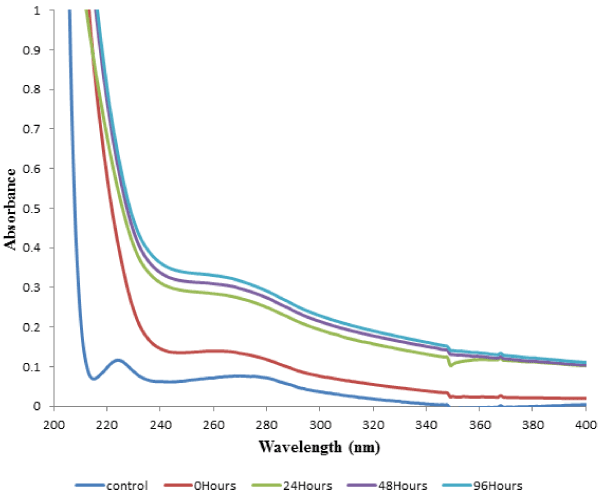 |
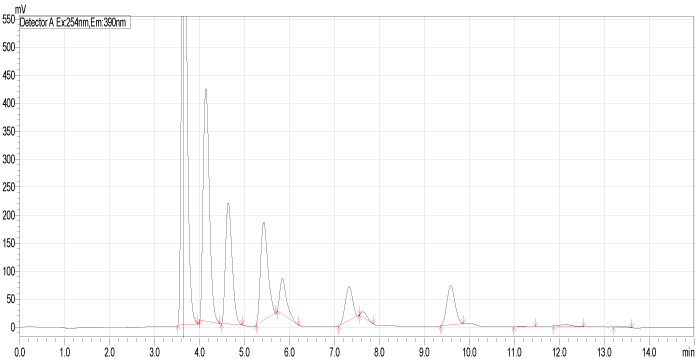 |
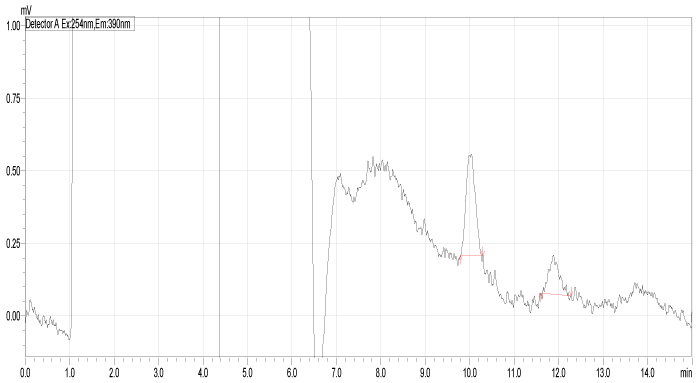 |
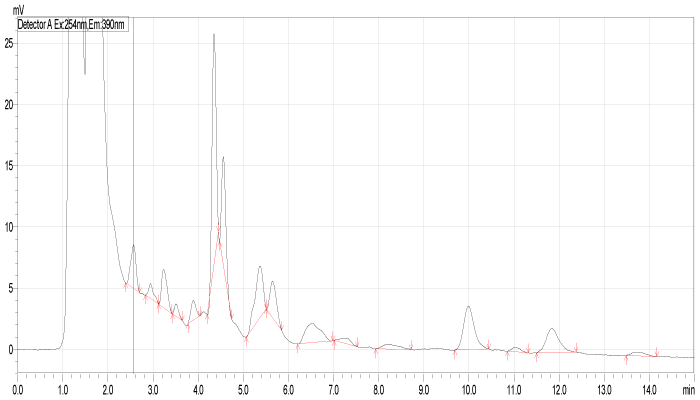 |
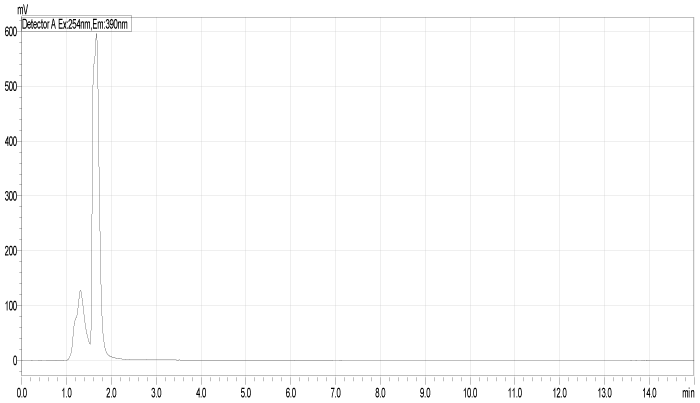 |
| Figure 1 | Figure 2 | Figure 3 | Figure 4 | Figure 5 |
Relevant Topics
- Anaerobic Biodegradation
- Biodegradable Balloons
- Biodegradable Confetti
- Biodegradable Diapers
- Biodegradable Plastics
- Biodegradable Sunscreen
- Biodegradation
- Bioremediation Bacteria
- Bioremediation Oil Spills
- Bioremediation Plants
- Bioremediation Products
- Ex Situ Bioremediation
- Heavy Metal Bioremediation
- In Situ Bioremediation
- Mycoremediation
- Non Biodegradable
- Phytoremediation
- Sewage Water Treatment
- Soil Bioremediation
- Types of Upwelling
- Waste Degredation
- Xenobiotics
Recommended Journals
Article Tools
Article Usage
- Total views: 14233
- [From(publication date):
December-2014 - Apr 04, 2025] - Breakdown by view type
- HTML page views : 9663
- PDF downloads : 4570
